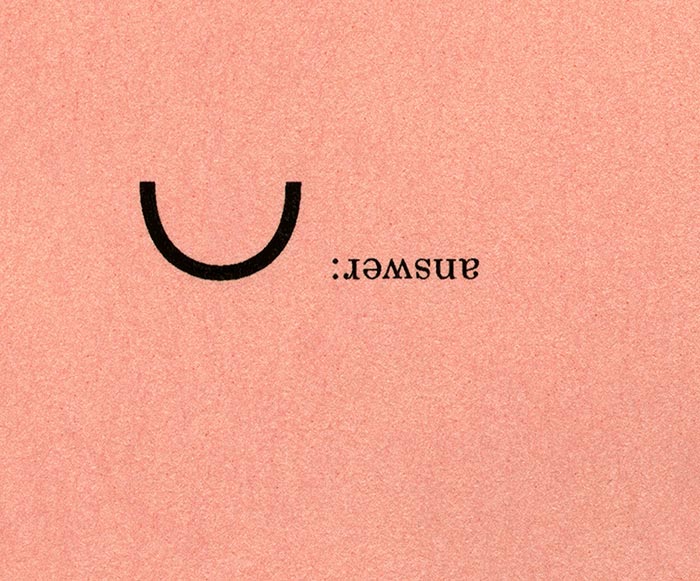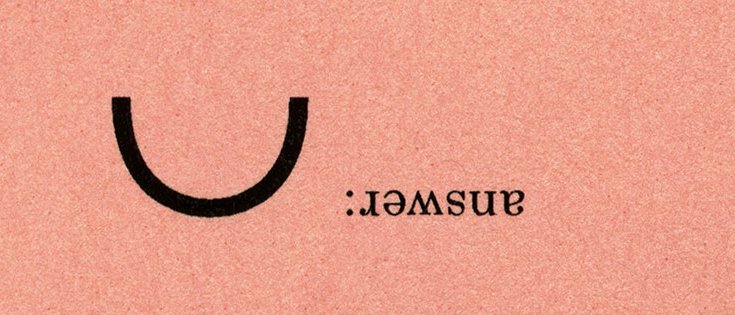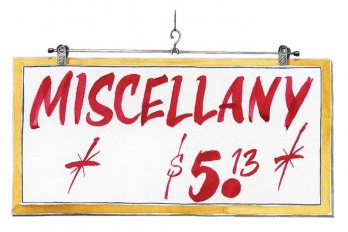Ayear ago, at the end of a University of Toronto lecture on mental health promotion, I asked 400 medical students whether they would be content if psychiatrists moved them from being distraught to a state of “normal unhappiness.” My mentor had asked me the same question when I began my training. The concept of normal unhappiness helped me accept that things were not always going to go well, and it also helped me understand my role as a psychiatrist: to intervene when time alone could not heal, and when my patients and their families or their communities could not cope. This concept of normal unhappiness has long been the standard in therapy courses, and I have raised it with my own students on and off for the past twenty-five years. That day, though, it was on my mind for other reasons.
This month marks the publication of the fifth edition of the Diagnostic and Statistical Manual of Mental Disorders, the bible psychiatrists use to diagnose mental illness. Since its inception in 1952, guidelines for diagnoses have become increasingly elaborate and controversial, and in the lead-up to the fifth version my colleagues and I followed the revision process closely. I knew that the proposed changes would likely increase the statistics for mental illnesses, yet again, and that this in turn might encroach on what we define as normal. Problems my profession had previously considered part of everyday living could be reclassified as pathological, and psychiatrists could be asked to treat issues previously thought to be outside our territory.
Even before the release, criticisms from outside of and within the American Psychiatric Association, the manual’s publisher, were fierce. DSM-5 workgroups have received over 13,000 comments and over 12,000 emails and letters since they started consultations in 2010. In June 2009, Allen Frances, chair of the task force for DSM-IV, suggested that the processes leading to DSM-5 were flawed, and that they ran the risk of “subtle” and “dangerous” unintended consequences such as new “false ‘epidemics.’” Worse, he continued, the work has “displayed an unhappy combination of soaring ambition and remarkably weak methodology.”
External criticism came from the British Psychological Society and a powerful coalition led by a faction of the American Psychological Association. In an October 2011 open letter to DSM-5, they argued that there was “insufficient empirical evidence” to support the new manual’s assertion that “all mental disorders represent underlying biological dysfunction.” The coalition also charged that “proposed changes to certain DSM-5 disorder categories and to the general definition of mental disorder subtly accentuate biological theory. In the absence of compelling evidence, we are concerned that these reconceptualizations of mental disorder as primarily medical phenomena may have scientific, socioeconomic, and forensic consequences.” The final consultation process only somewhat mollified the BPS: while some diagnoses were changed in response to widespread censure, the association maintains that the guidelines “lead to the risk of overdiagnosis and thereby potentially unnecessary and potentially harmful treatment with medication.”
Over-diagnosis is a real concern, and not limited to the new edition of the manual. According to the National Comorbidity Survey Replication, the most comprehensive study of mental illness in the United States, about 26 percent of the American population would have had some sort of psychological disorder in the past twelve months, if they were interviewed and diagnosed according to DSM-IV.
The goal of each manual, of course, is to help professionals do their jobs, make diagnoses, and identify proper treatments. Historically, the authors have taken a utilitarian approach, characterizing a mental disorder as “a clinically significant behavioral or psychological syndrome or pattern that occurs in an individual and that is associated with present distress… or disability… or with a significantly increased risk of suffering.”
This definition presents two problems. The first is that the onus is on the psychiatrist to figure out where normal human behaviour ends and pathological behaviour begins. If a woman chooses a string of unsuitable partners and exhibits suffering and distress when each one leaves her, does her behaviour qualify as pathological? Does a child who cannot sit still in class, who is easily bored and becomes disruptive, have a mental illness?
The second issue is context. Disability is a possible criterion for a diagnosis, but with the caveat that it reflects a problem of functioning. Whether or not someone has trouble functioning depends on what he or she is being asked to do. If doctors rely on function to help them define mental illness, this could lead to two people with the same symptoms receiving different diagnoses. A man who keeps to himself, has difficulty communicating with new people, and cannot hold down a job because of this could be diagnosed with a mental illness. But the same man might not be diagnosed if he were rich enough not to need a job. In the latter case, no clear problem exists with functioning.
Psychiatric diagnoses are rarely objective: they are based on how doctors interpret what their patients say and do. Psychiatrists’ interpretations can be influenced by many factors, including their own drives and demons, their peers, their patients, and the many policy-makers and businesses, especially the pharmaceutical industry, that specialize in mental health issues. Changes in the way psychiatrists diagnose reflect how they see the world and what the world asks, or is happy, for them to do.
The increase in the number of DSM diagnoses may reflect a larger shift in society’s expectations. Out of the 400 medical students at my lecture, only one considered it reasonable to expect psychiatrists to return patients to a state of normal unhappiness. Everyone else thought we should strive for more. This suggests that the psychiatrists and psychologists who created the manual, as well as the North American society they serve, now expect to achieve something other than normal unhappiness. It also raises questions: If unhappiness causes distress and people do not want to be unhappy, does this make unhappiness an illness? And should the pragmatic DSM-5 offer guidance to professionals about how to diagnose and treat people who want to be happier?
Three major systems are used to make mental health diagnoses: International Classification of Diseases, published by the World Health Organization (and used by more professionals in more countries); DSM, the primary source in the US and Canada; and Chinese Classification of Mental Disorders, in part a hybrid of the other two but with culture-specific diagnoses. Because DSM is rule based—doctors make a diagnosis if the patient has certain symptoms—it is often preferred by researchers, pharmaceutical companies, regulatory bodies, and health insurers.
The first official classification system in the US was developed for the 1840 national census. Governments around the world had started to take responsibility for mentally ill people, and states were building huge hospitals. Getting a handle on the possible volume and cost of this enterprise was important. The American government was not interested in complex ideas of the psyche or symptoms of depression. It was only interested in finding out who could not function in society and who might need looking after. To that end, there was only one category to choose from: “idiocy/insanity.”
By 1917, with mental hospitals full, the National Commission on Mental Hygiene and a forerunner of the American Psychological Association decided that a more detailed diagnostic system would prove helpful in deciding which hospital patients needed what kind of treatment. So they developed the Statistical Manual for the Use of Institutions for the Insane, which contained twenty-two diagnoses.
The development of psychiatry in Canada followed an almost identical trajectory, not least because major figures such as Dr. Clarence Hincks, who is credited with co-founding the Canadian Mental Health Association, worked at the national level in both Canada and the US throughout the first half of the twentieth century.
A major issue in North America was how to treat the large numbers of soldiers who had suffered shell shock during World War I. Having developed the necessary expertise, US psychiatrists later became involved in recruiting American soldiers for World War II. It was hoped that a more detailed assessment and characterization of their psychology would help to identify those who were unlikely to survive the rigours of war. A new diagnostic system, Medical 203, was published in 1943 and adopted by the US armed forces and the Veterans Administration.
The game changer came five years later. Previously, International Classification of Diseases had categorized only physical illnesses, but in 1948 it added a section on mental disorders, which could be used to diagnose anybody, not just those in institutions or the military. Rather than accept the ICD system, though, the US decided to define the mind for itself. In 1952, the APA produced an adapted version of Medical 203, the original Diagnostic and Statistical Manual of Mental Disorders.
DSM-I listed ninety-five mental disorders. DSM-II was published sixteen years later with 130. Both editions were based on the theories of Sigmund Freud and other therapists who believed that present behaviours were caused by the mind trying to resolve problems from the past. The symptoms that constituted a disorder were not described in detail, and the manual’s diagnoses remained subjective. It soon got into trouble.
In 1971, a major international study attempted to measure the rate of schizophrenia in the UK and the US, and it showed that diagnosis rates were much higher in the US. Scandal followed in 1973, when American psychologist David Rosenhan published “On Being Sane in Insane Places” in the journal Science. He had sent eight healthy people to gain admission to twelve different American psychiatric hospitals by saying they heard voices. Once admitted, they acted normal and exhibited no symptoms. None of the hospitals detected the fake patients. All were diagnosed with a mental illness and were prescribed various medications as a condition of their release, even though they had presented identical symptoms.
Such challenges forced another rethinking of the manual, and the 1980 DSM-III aimed to improve the uniformity and validity of psychiatric diagnosis, and to sort out the problem of over-diagnosis of schizophrenia. Theories of pathology based on the thinking of therapists such as Freud were abandoned. Diagnosis was made on symptoms alone, and these were now more clearly defined. The book ballooned to 494 pages and listed 188 diagnostic categories; a 1987 revision, DSM-IIIR, grew to 567 pages and 215 diagnoses. But the new approach carried its own set of problems, and the chair of the DSM-III committee later criticized his own methods, saying that they had led to the medicalization of 20 to 30 percent of the population, who may not have had any serious mental problems.
In 1994, the APA decided it was time for a new, bigger edition (886 pages, 283 diagnoses) and an approach that considered more than just symptoms. DSM-IV advised psychiatrists for the first time to refrain from diagnosing an illness unless symptoms caused “clinically significant distress or impairment in social, occupational, or other important areas of functioning.” By allowing clinicians to rely more heavily on their judgment, the new methodology encouraged a more subjective interpretation of textbook illnesses. It also caused confusion, because equally severe symptoms may be more upsetting to some people than to others, but only the person who is distressed gets a diagnosis.

Identifying and defining mental illness has always been fraught. Though medical conditions may reflect discrete problems with clear pathology, psychiatric conditions can reflect many underlying issues. Putting them together and saying they constitute an illness only works if there is pathology to back it up, but the pathology of mental illnesses is not so clear cut. Medical science may work well for illnesses of the brain, where doctors can identify lesions that are causing specific symptoms, but not for illnesses of the mind, where often they cannot. And even if they could link pathology to symptoms of the mind, we would still have a problem, because diagnoses are not based on symptoms alone, but on the impact those symptoms have on how a person functions in the world. Reducing humans and human behaviour to symptoms without considering the complexities of existence—and the fact that we are past, present, and future beings with a social and historical context—may never produce a satisfying system for understanding mental problems.
When I trained back in the late 1980s, I was taught that psychiatry had little place in the grieving process unless the person was dangerously ill or suicidal. It was ill advised to prescribe tranquilizers, because they interfered with natural processes in the body and the mind for dealing with traumatic events. It also undermined the role of family and community in helping people through difficult times.
We were taught to refer the person to a grief counsellor and to only consider intervention for complicated or prolonged grief. If the person was still in bad shape at six months, then we would consider stepping in. The 1994 DSM-IV delivered a different message: the new cut-off for abnormal grief was two months. Now DSM-5 proposes that psychiatrists diagnose depression right after bereavement and offer drug treatment to those who are grieving and depressed. To meet the guidelines for any form of major depression, a patient need only exhibit symptoms for two weeks.
One member of a DSM-5 workgroup, Kenneth Kendler, has argued that bereavement is simply a negative life event. He suggests that people are resilient, and that for most of them major negative life events do not lead to depression, although in some they do. Depression after bereavement or job loss looks the same, so it makes sense to diagnose and treat it in those who are grieving.
But this argument misses a key point. Grieving is a personal and social process that reflects both how we deal with mortality and the way we demonstrate the bonds between us. Depression is part of the grieving process, a part of letting go as well as paying one’s respects. The emotions may look the same, but the context and the meaning may be different from a response to the loss of a job. What would it say about where we are as a society if people did not expect to be upset and depressed after the death of a loved one?
It’s not that people don’t expect to be distressed or even depressed, but that many think society will not wait for them to heal. They do not want to hold back a high-performing team. They complain that they do not have proper coverage in their jobs or their medical insurance for grief. They cannot afford the time off work, or they have little social support and so are open to pharmacological assistance. Others say that in a tight market they fear what will happen to their jobs if they take a prolonged leave.
Such expectations may say more about our culture than about the experts who developed DSM-5 or the psychiatrists who will use it. As one colleague has remarked, “Which doctor these days is going to say to someone who is depressed, grieving, and asking for antidepressants, ‘Go off and be distressed. It will be good for you’? ”
The British Psychological Society has criticized DSM-5 for being “clearly based largely on social norms, with ‘symptoms’ that all rely on subjective judgements… not value-free, but rather reflect[ing] current normative social expectations.” It has also expressed a major concern that “clients and the general public are negatively affected by the continued and continuous medicalisation of their natural and normal responses to their experiences… which demand helping responses, but which do not reflect illnesses so much as normal individual variation.”
Derek Summerfield, a renowned British psychiatrist who researches post-traumatic stress disorder around the world, questions the usefulness of sending in trained counsellors to diagnose and treat disaster victims, a practice he links to the guidelines set out in international classification systems such as DSM. PTSD first entered the manual as a concept in 1980. In a 2001 British Medical Journal article, he contended that labelling people with PTSD may do more harm than good: “To conflate normality and pathology devalues the currency of true illness, promotes abnormal illness behaviour, and incurs unnecessary public costs.” He argued that when people are expected to cope, they build resilience: treating them as “medicalised victims” instead of “feisty survivors” could undermine their skills to help themselves and others. Maybe we are relying too heavily on therapists to help fix what is, at bottom, a problem better addressed in a social context.
Historically, the DSM system has focused on the individual when much of the evidence points to the need for better understanding of the social forces that cause us difficulty and shape our world. That shaping of the world includes what the professionals consider a diagnosis, and what we expect our governments and doctors to do for us. If we believe that people have the right to not suffer—the flip side of the right to pursue happiness—we need to have a discussion about the best way to achieve that. Do we want to promote a society that can support people psychologically, or do we want to continue the process of diagnosing and treating the problems manifested in individuals?
There is some indication that the manual may soften its emphasis on the individual. The previous edition introduced the concept of relational problems, not as a full-fledged diagnosis, but as a contributing factor to it. In 2002, a research agenda for DSM-5 proposed adding relational disorders as a primary diagnosis to help therapists identify “persistent and painful patterns of feelings, behavior, and perceptions involving two or more partners in an important personal relationship.” Rather than blaming either party for the problem, the aim is to examine the relationship between the two and consider what could be done about it. Over the past ten years, a task force has pushed to include relational disorders in both the new DSM and the next revision of International Classification of Diseases. To that end, it has sponsored two national conferences and published two books. Relational disorders did not make the cut for DSM-5, but the new definition of relational problems is far more in-depth and precise than the previous version, and the task force hopes to include the new diagnosis in the next edition. This would mark a revolutionary shift away from the manual’s preoccupation with the individual.
If our minds are engaged in a relationship with the world, then mental illness is the fault of neither. It is the relationship between them that is problematic. Instead of focusing on one or the other, we should spend more time considering the interaction between the two and what can be done about it. The new DSM may help psychiatrists formulate more accurate diagnoses, but I worry that its focus on the individual may detract from a wider investigation into the issues. It pushes us toward labelling and blaming people for reactions to the situations they find themselves in, rather than helping us to understand the many factors that can contribute to mental illness. We need to understand both the individual and the environment, and how they interact, if we are truly going to improve the world’s mental health.
This appeared in the May 2013 issue.




